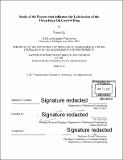| dc.contributor.advisor | Tian Tian. | en_US |
| dc.contributor.author | Li, Yuwei, S.M. Massachusetts Institute of Technology | en_US |
| dc.contributor.other | Massachusetts Institute of Technology. Department of Mechanical Engineering. | en_US |
| dc.date.accessioned | 2017-10-04T15:05:31Z | |
| dc.date.available | 2017-10-04T15:05:31Z | |
| dc.date.copyright | 2017 | en_US |
| dc.date.issued | 2017 | en_US |
| dc.identifier.uri | http://hdl.handle.net/1721.1/111723 | |
| dc.description | Thesis: S.M., Massachusetts Institute of Technology, Department of Mechanical Engineering, 2017. | en_US |
| dc.description | Cataloged from PDF version of thesis. | en_US |
| dc.description | Includes bibliographical references (pages 98-100). | en_US |
| dc.description.abstract | The oil control ring (OCR) is arguably the most important component of the piston ring pack system in internal combustion engines. The OCR regulates the oil supply to the top two rings and therefore is critical to both lubricating oil consumption and friction generation. Three-piece oil control ring (TPOCR) is widely used in gasoline engines. However, there lacks a coherent understanding of the functional behavior of the TPCOR in practice due to its complex nature and the shortage of the research effort. The present work is aimed at improving the robustness and the accuracy of a previously developed model for the dynamics and the lubrication of the TPOCR. First, the robustness of the present TPOCR model was improved by modifying the initial guess of the globally convergent Newton's method. The roughness truncation method was applied to the model to improve the accuracy of the model. A correlation between the integrated hydrodynamic pressure and the rail/liner clearance was developed to replace the numerical calculation. Then, to provide more realistic modeling results in the next generation of the model, several factors that could influence the lubrication of the TPOCR were studied. Specifically, these factors include the rail profile and the liner roughness. It was found that the unworn region and the liner roughness could have significant impact on the oil film thickness, the hydrodynamic pressure generation, and the friction generation. Corresponding correlation methods were developed to include these factors in the future TPOCR model. Finally, the gas flow pattern in the TPOCR groove was examined as the first step to understand the oil transport inside the OCR. This is the first attempt to resolve the gas and oil flow inside the TPOCR groove. Together with the TPOCR model and the future ring pack model with TPOCR as the OCR, the study of the gas/oil flow should give a complete picture of the function of the TPOCR.. | en_US |
| dc.description.statementofresponsibility | by Yuwei Li. | en_US |
| dc.format.extent | 100 pages | en_US |
| dc.language.iso | eng | en_US |
| dc.publisher | Massachusetts Institute of Technology | en_US |
| dc.rights | MIT theses are protected by copyright. They may be viewed, downloaded, or printed from this source but further reproduction or distribution in any format is prohibited without written permission. | en_US |
| dc.rights.uri | http://dspace.mit.edu/handle/1721.1/7582 | en_US |
| dc.subject | Mechanical Engineering. | en_US |
| dc.title | Study of the factors that influence the lubrication of the three-piece oil control ring | en_US |
| dc.type | Thesis | en_US |
| dc.description.degree | S.M. | en_US |
| dc.contributor.department | Massachusetts Institute of Technology. Department of Mechanical Engineering | |
| dc.identifier.oclc | 1004236541 | en_US |
